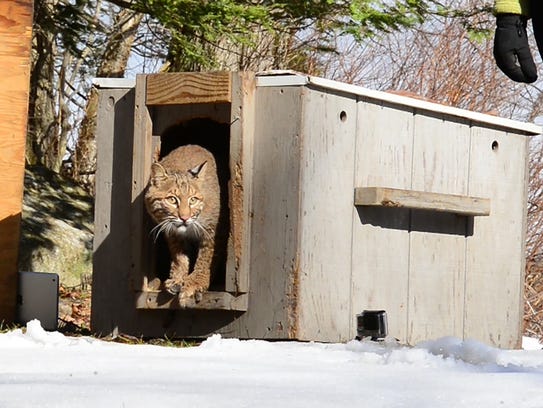 |
| Bobcat release Photo: Tariq Zehawi/NorthJersey.com |
A nice rehabilitation story about a bobcat whose hind leg was crushed by a car in November being returned to the wild at Wawayanda State Park in March.
Vehicle strikes are a major threats to bobcats, and about a half dozen bobcats are reported killed by vehicles each year.
Bobcats, which resemble domestic cats es[ecially before maturity, grow to about 2 feet tall. They studiously avoid human contact, but increased sightings in the northern part of the state show some population growth.
This particular bobcat, who was about 6 months old when hit, was released at Wawayanda by staff from the NJ Division of Fish and Wildlife.
The animal was rehabilitated at the nonprofit Woodlands Wildlife Refuge in Hunterdon County. It has sustained multiple femur and joint fractures to its hind leg. The bobcat needed pins, wires, screws and plates to repair the damage.
"This success story is a testament to the important work the Division of Fish and Wildlife does every day to conserve and protect our remarkably diverse populations of wildlife," said Department of Environmental Protection Commissioner Bob Martin. "The division would not be able to do this type of work if not for the strong partnerships it has built with groups such as the Woodlands Wildlife Refuge and the generous support from those who donate a portion of their state income-tax returns to wildlife conservation."
As we have written here before, the endangered bobcats are New Jersey's only species of wild cat. Most NJ bobcats live in the northwestern corner of the state.
It has made some recovery in the state from a time when it had vanished (nearly extirpated) from the state. , but has been making a slow recovery following introduction of bobcats from Maine in the late 1970s and early 1980s. Most of the population lives in the northwestern part of the state.
SOURCE: http://www.northjersey.com/story/news/passaic/2017/03/29/state-releases-bobcat-into-wawayanda-west-milford/99740518/
No comments:
Post a Comment